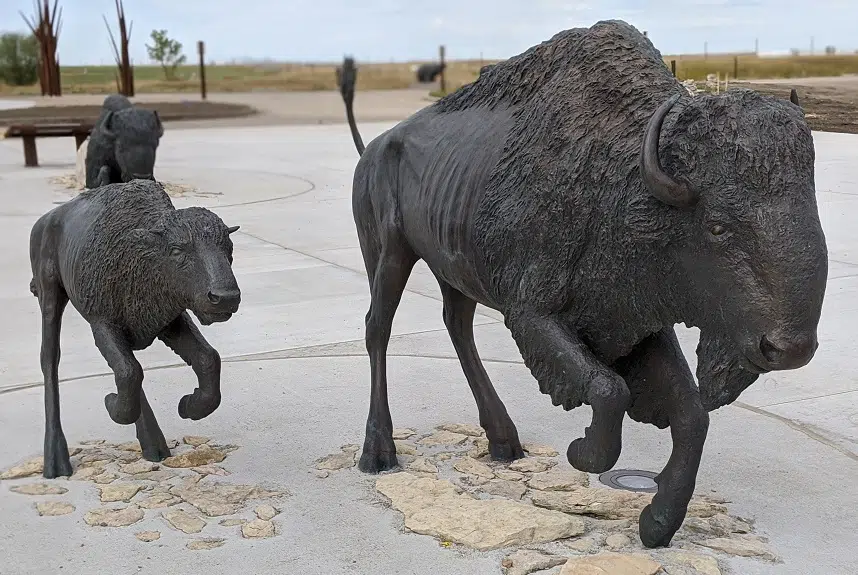Wanuskewin Heritage Park is open to the public once again.
The park closed in mid-March because of COVID-19. Despite the park being closed to the public, a lot was happening behind the scenes.
“When the park closed to the public in mid-March we ended up getting very busy in terms of construction. We almost hit fast-forward on a number of our projects,” said Andrew McDonald, director of marketing and communications for Wanuskewin. “There has been a lot of significant milestones done while the park has been closed. There were four baby bison born here in the Spring, it was the first time in 150 years that bison had been born on this land.”
Some of the major projects include building upon the interpretive centre, new meeting spaces, classroom spaces, a new gift shop, improving the restaurant, expanding the art gallery, a new entry plaza as well as constructing a new conference and events centre.
McDonald is excited about the future of the park. He hopes that ambitious expansion will help the area get recognized as a world-class destination and Saskatchewan’s first UNESCO World Heritage Site in the future.
The park hopes to submit an application package to get noticed as a UNESCO World Heritage Site by 2023 to 2024.
“By the end of October and beginning of November we will have a brand new conference and events centre available. These will be state of the art facilities,” said McDonald. “We are just on the tail end of a $40 million-dollar campaign to rejuvenate the park.”
Some of the permanent exhibits that will be featured in the park are expected to be available by Christmas.
“I hope people have a sense of pride when it comes to Wanuskewin, we are a community-owned park. We are born out of the community. I really hope that families will continue to come out here for generations to come. There is so much history and culture here,” said McDonald. “This incredible land is the site where people have come for ceremonies, hunting, and trade. This has been a peaceful gathering place for every single nation of the northern plains.”
“Wanuskewin is such a beautiful example of what can be built when indigenous and non-indigenous communities come together for a common goal.”














